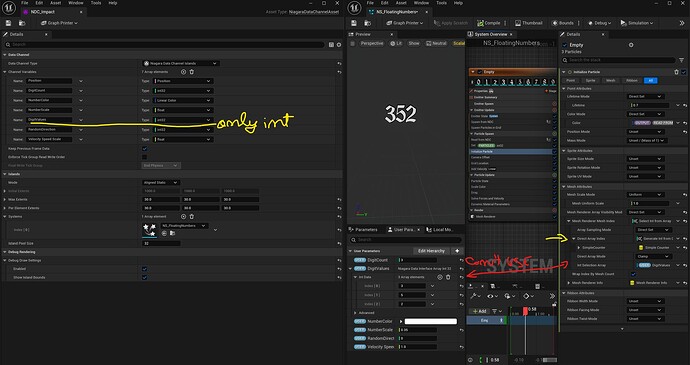www.forbes.com
ToplineThe Supreme Court will hear oral arguments Friday morning over whether TikTok should be banned in the U.S. if it doesnt separate from parent company ByteDance, a major case that will have far-reaching implications for the First Amendment and TikToks millions of usersthough its still unclear how the court will rule.Participants hold signs in support of TikTok outside the U.S. Capitol Building on March 13, 2024 in ... [+] Washington, DC.Getty ImagesKey FactsJustices will hear arguments in two consolidated cases taking aim at the federal law, which requires Chinese-owned ByteDance to divest from TikTok, or else TikTok will be banned from U.S. app stores and from being hosted by American internet service providers.One case is brought by TikTok and ByteDance themselves, while another case is brought by content creators on the app.TikTok and creators on the app argue the law violates their First Amendment rights by taking away access to the platform and its users speech, while the federal government argues the law is necessary to protect national security given ByteDances Chinese ownership.A lower appeals court previously sided with the federal government, ruling the ban on TikTok is justified and doesnt violate the apps and its users First Amendment rights, given that all speech on TikTok is still permitted if the company just separates itself from ByteDance.The law is set to take effect Jan. 19 unless the Supreme Court steps in and either overturns the law or pauses it from taking effect.Its unclear when the court could issue its ruling, but the court quickly scheduling the case for oral arguments and declining to pause the law in the meantime suggests its likely prepared to rule swiftly, possibly within days of hearing oral arguments.What Are The Arguments For Banning Tiktok?The federal government emphasized in its brief to the Supreme Court the grave national security threats it believes keeping TikTok in ByteDances hands could pose, arguing the Chinese government could use the data TikTok collects on U.S. users for espionage or blackmail. The Chinese government could also covertly manipulate the platform to advance its geopolitical interests and harm the United States, the federal government posits, pointing to past efforts by China to harm the U.S. The governments specific evidence for banning TikTok has never been released publicly and remains classified, but the government said in its filing that sealed evidence lends further support to its conclusion that TikTokif still linked to ByteDanceshould be banned. The Biden administration denies that the law infringes on TikTok or its users First Amendment rights, arguing the TikTok ban does not target or regulate speech; instead, it restricts the provision of services to a platform that Congress determined was controlled by a foreign adversary. The interest in preventing a foreign adversary from harvesting Americans sensitive data does not involve speech at all, the government argued. And the interest in preventing covert content manipulation by a foreign adversary seeks to prevent all such manipulation regardless of the content or viewpoint being advanced.What Are The Arguments Against Banning Tiktok?TikTok and ByteDance claimed in a filing that the ban taking effect will silence the speech of the company and its more than 170 million American users, arguing that even if there is a valid national security threatwhich it doesnt concede there isthe government shouldnt ban the app except as a last resort after it considers less-restrictive alternatives. TikTok argued the government also manifestly failed to consider other options before it approved the ban. The specter of threats from China cannot obscure the threat that the Act itself, and the decision below upholding it, pose to all Americans, TikTok argues, claiming the company is a U.S. company exercising editorial discretion over a U.S. speech platform and is fully protected under the First Amendment. Creators suing the government over the ban similarly argue the federal law is a direct and severe restraint on speech, claiming the lower courts ruling upholding the ban is utterly antithetical to the First Amendment and flies in the face of our countrys historical practices and decades of precedent concerning the regulation of speech that supposedly threatens national security. TikTok and ByteDance have also rejected the idea that ByteDancewhich controls TikToks algorithmcan just divest from TikTok, telling the Supreme Court that the two entities separating would imperil the algorithms future functionality and fundamentally alter the content TikTok offers, putting U.S. users on an uncompetitive American island where they could not access other countries TikTok content or have their content seen by other countries users.How Will The Supreme Court Rule?Its still unclear how the Supreme Court will rule and whether it will uphold the TikTok ban, though justices could give some sense of how theyre leaning when the court hears oral arguments Friday. Some legal experts suggested before the lower courts ruling upholding the ban that they thought the federal law is a violation of the First Amendment, telling NPR the government seemingly shouldnt be able to shut down speech on the app without a concrete and specific national security threat. A panel of judges on the federal appeals courtappointed by Presidents Barack Obama, Ronald Reagan and Donald Trumpultimately took the opposite view, however, ruling they trusted the governments conclusion that banning the app is necessary and that the law is actually a less restrictive way of handling the concerns about TikTok since it still allows the app to operate without ByteDance. Vox notes the bipartisan nature of the appeals courts ruling makes it unlikely the Supreme Court will vote to overturn it, though ultimately it still remains to be seen how the case will go.What About Trump?President-elect Donald Trump is not a party in the TikTok lawsuit, and the law is scheduled to take effect one day before hes inaugurated. Trump has nevertheless asked the Supreme Court to pause the law from taking effect until after he takes office, saying he opposes the TikTok ban and should be given the chance to negotiate a solution with TikTok before the ban can take effect. It remains unclear whether the court will comply with Trumps request if it votes to uphold the law, and when the law could take effect if it does side with Trump and pause the ban.Whos Supporting And Opposing The Tiktok Ban?Among those arguing against the ban are free speech groups like the American Civil Liberties Union and the Knight First Amendment Institute, along with groups of professors who focus on national security, cybersecurity and the First Amendment and internet law. The TikTok ban will violate the expressive rights of millions of Americans, the ACLU and other free-speech groups argued in a brief, while three national security professors argued a national security agreement previously negotiated between the U.S. government and TikTok already successfully safeguards against lawmakers concerns that they used to justify banning the app. Other coalitions are arguing the ban should be upheld, including former national security officials, former officials at the Federal Communications Commission and activist groups that advocate on behalf of the Uyghur people, people in Hong Kong and others against the Chinese government. Twenty-two states with GOP attorneys general also urged the Supreme Court to uphold the ban due to the national security threat allegedly posed by TikTok, including Alabama, Arkansas, Florida, Georgia, Idaho, Indiana, Iowa, Kentucky, Louisiana, Mississippi, Missouri, Montana, Nebraska, New Hampshire, North Dakota, Ohio, Oklahoma, South Carolina, South Dakota, Tennessee, Utah and Virginia. Members of Congress were divided on the TikTok ban: Leaders of the House Select Committee on the Chinese Communist Partychairman Rep. John L. Moolenaar, R-Mich., and ranking member Rep. Raja Krishnamoorthi, D-Ill.filed a brief arguing in favor of the law, while Sen. Ed Markey, D-Mass, Sen. Rand Paul, R-Ky., and Rep. Ro Khanna, D-Calif., who have been critical of the ban, argued the court should overturn it.What Happens If The Tiktok Ban Takes Effect?Its still unclear what will happen if the ban on TikTok takes effect and what it will look like for users. The law bans U.S. app stores from hosting the TikTok app, meaning users cant download or update TikTok. It also bans internet service providers from hosting TikTok, including Oracle, which houses the apps U.S. user data. TikTok predicted in a court filing that would have a serious impact, suggesting the company could no longer provid[e] the services that enable the TikTok platform to function, effectively shutting down TikTok in the United States. University of Minnesota law professor Alan Rozenshtein noted to CBS News TikTok could just move those servers out of the U.S., however, which would keep TikTok online but mean the app would eventually stop working if U.S. users cant update it. The law is also expected to impact other ByteDance-owned apps, like CapCut and Lemon8, but its not clear how the ban could impact things like the TikTok Shop or TikToks creator fund. TikTok and ByteDance have also so far ruled out the possibility of divesting, with TikTok claiming in a filing it would not be possible technologically, commercially, or legally.Can Trump Stop The Tiktok Ban?If the ban does take effect Jan. 19 as scheduled, Trump could pause the ban for 90 days under the law if theres evidence TikTok is in the process of separating from ByteDance. Trump could also pause the law without evidence of thator just declare TikTok is complying with the law, whether it actually is or notbut that would mean it would still be possible for one of TikToks rivals to sue in court and have the ban put in effect, Rozenshtein noted in an article for Lawfare. Trump could also try to negotiate with TikTok and ByteDance, and James Lewis, director of the Strategic Technologies Program at the Center for Strategic and International Studies, told NPR China could be persuaded to approve of ByteDance selling TikTok in exchange for Trump backing off his threat of high tariffs on Chinese imports. The president-elects hands are otherwise tied on the TikTok ban, whichunless the Supreme Court overturns itcant be undone unless Congress repeals it.Key BackgroundPresident Joe Biden in April signed the law restricting TikTok, following longstanding concerns by lawmakers on both slides of the aisle about the app and its ties to China. TikTok has long denied any wrongdoing and any ties to the Chinese government, though Forbes has reported on concerns involving the company, including TikTok spying on journalists, promoting Chinese propaganda that criticized U.S. politicians, mishandling user data and tracking sensitive words. TikTok and creators on the app filed lawsuits against the federal ban days after it was approved, and the federal appeals court upheld the ban in December, as both the plaintiffs and government asked for a ruling in time to appeal it before the law took effect. The courts ruling set off a scramble by TikTok to appeal the case, and the company and creators went to the Supreme Court after the appeals court declined to pause the law from taking effect in order to give TikTok more time to bring its case before the Supreme Court. The high court quickly scheduled oral arguments for Jan. 10, which is much faster than the courts usual months-long timeline.Further Reading











